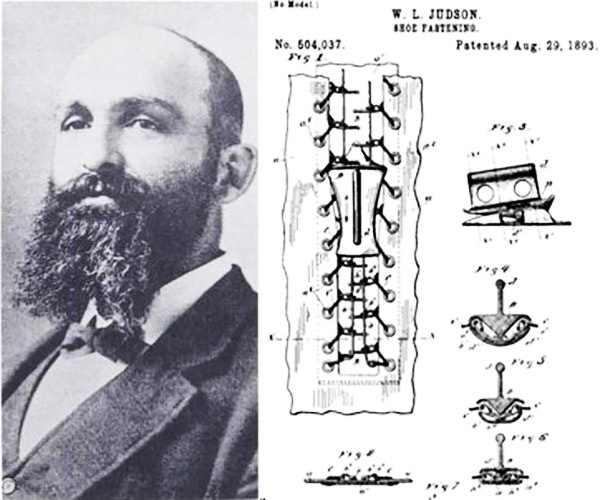Once upon a time, in ancient times, wrapped in an animal skin, an ancient man invented to bandage himself with some kind of long vine. Over time, it turned into a belt. Then the man came up with laces, then buttons. But there are many of them, and it takes a long time to fasten them. It took a long time, and people came up with a zipper. This zipper quickly saves you from the cold, which means that in order to dress warmer, you need to know how to repair the zipper on your clothes.
Read in the article
- 1 The history of the invention of the zipper
- 2 Lightning classification
- 3 How to fix a zipper
- 4 Conclusion
The history of the invention of the zipper
This invention had several authors and a long process of creation. The first version was created at the end of the 19th century by the American tailor Howie, 20 years later the American engineer Judson, a few years later the engineer Sandbok took up the improvement of the product and its production. The army became interested in the invention, and the fastener got on clothes for the military.




After the First World War, lightning struck civilian clothing for men, and from 1930 on women. Now it is a very popular and comfortable clasp.
Lightning classification
There are many different types of lightning. They differ in size - small and large, material - metal and plastic, type of fastening - spiral (or twisted) and tractor (or cast). Zippers are split and one-piece, single-lock and two-lock. The correct model is used depending on the type of clothing. And they use a zipper not only on clothes, but also to fasten pockets on bags, suitcases, backpacks and in other places.
And anywhere the zipper can break. And you need to be able to fix it, best of all - with your own hands.
How to fix a zipper
The repair method depends on the type and cause of the buckle breakage.
If the zipper is just tight, you need to wipe the clove with soap, a candle, a soft pencil lead. If the lock is stuck and does not move, then you need to carefully examine it. Most likely the lining is stuck. It needs to be carefully pulled out and everything will work.
The most common nuisance is that the clasp comes loose. The teeth stopped engaging one after the other. And the reason here is that the slider (lock, "dog") has worn out a little from work, the working channel has become a little wider and has ceased to press the teeth with the required effort. The repair is simple in this case. It is necessary to lightly press one and the other edges of the dog with pliers.


The situation is a little more complicated if the first repair did not help. It is necessary to change the "dog". In fact, there is nothing difficult, just a little more operations. The fact is that at the upper end of the fastener on each stream there are stops that prevent the slider from jumping off. If the zipper is metal, then these stoppers must be tucked away with a screwdriver, slightly unbent, removed and put aside. The slider can now be removed, a new one installed, the stops in place and tightened with pliers. The repair is legal.
If the zipper is plastic, then the restraints are plastic. You just need to break them off, then change the slider. To prevent the lock on the upper end from slipping off, you need to sew the very end of each stream in several stitches with strong thread. Or you can just sew the very ends of the streams into the lining.

It happens that from time to time the edge of the fabric tape, on which the zipper is collected, has become disheveled. In this case, it is necessary, without delay, to drip glue on the torn place, which will harden when it dries, for example, epoxy. And everything will be all right.
Quite often, on a tightly walking lock, a tongue breaks off, for which you need to pull. Prompt repair in this case is the use of a paper clip, key ring or safety pin.

If the lightning has become completely unusable, and it needs to be replaced, then you have to work hard here. The main thing is to try to do without ripping out the old zipper. If one floor of the jacket is equipped with buttons, then on this side, the old zipper must be cut at close range to the jacket. Now you need to sew one half (one stream) of the new zipper here. The second stream should be sewn onto the remaining half of the old zipper. This technology makes it possible to do without time-consuming evaporation.
Conclusion
For a skilled person, there are no unsolvable problems. Lightning breakage (in English - zipper) is an unpleasant situation, but not catastrophic. Everything can be fixed with your own hands.



